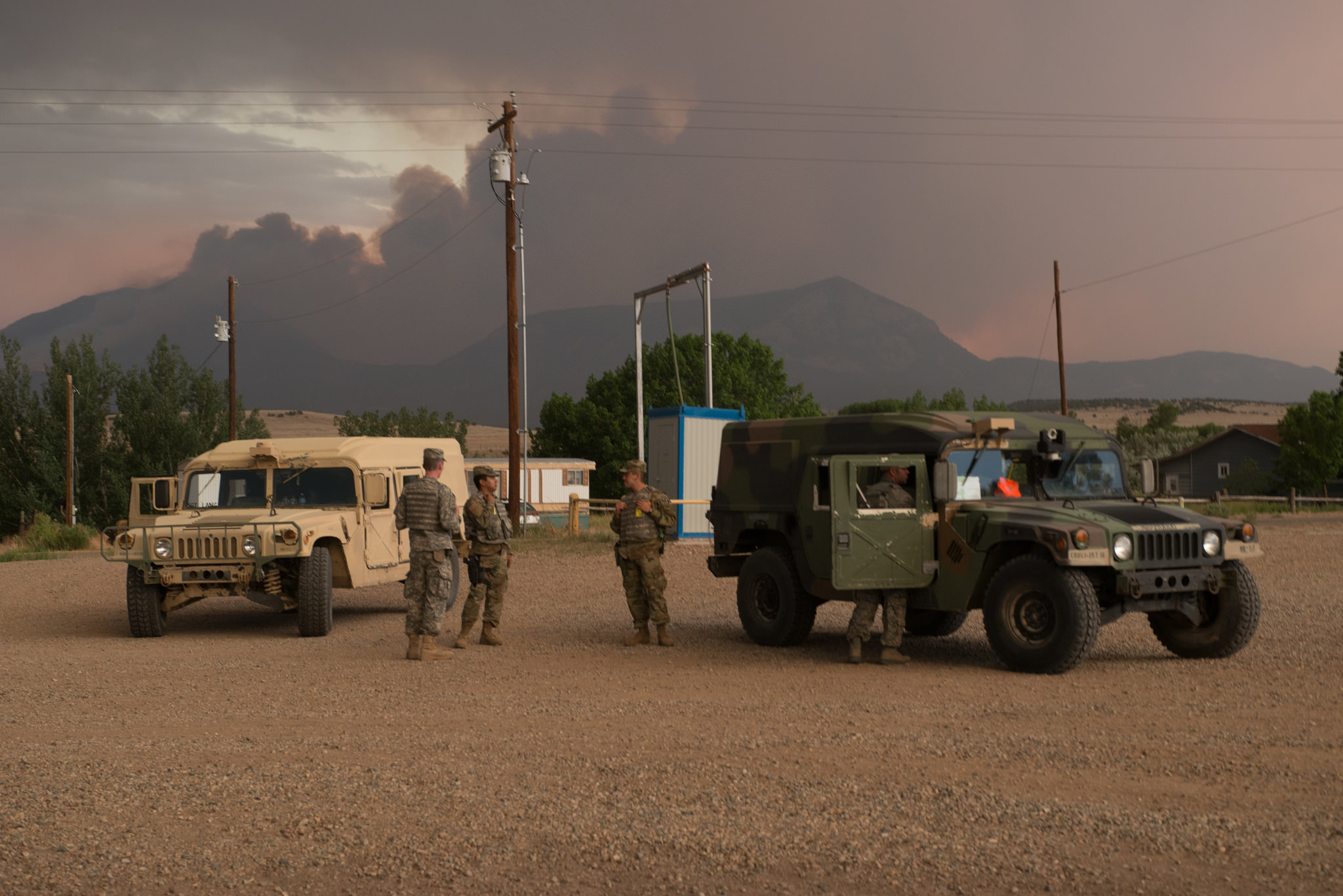After a record-breaking year of destruction, the summer is off to a fiery start. This week alone, there are more than 50 active wildfires burning across California, Colorado, and the rest of the West, many in urbanized areas.
Pacific Standard spoke with wildfire policy expert Char Miller to learn which wildfires he’s watching, and what they can tell us about a pattern of destruction that he no longer calls the “new normal”—just “normal.”
The Spring Creek Fire, Costilla and Huerfano Counties, Colorado

(Photo: Colorado National Guard)
Scorching more than 100,000 acres, the Spring Creek Fire is already the third-largest fire in Colorado history, and set to become the second.
Miller identified climate change as the underlying driver for the hot, dry conditions affecting the state, which now has nearly a third of the nation’s active wildfires, according to the Denver Post. Those include some of the strongest blazes still burning this week: the 416 Fire and the Lake Christine Fire.
Georges Fire, Inyo County, California
Authorities say lightning set off this blaze near the Mount Whitney trailhead in the Sierra Nevada, temporarily halting hiking and camping activity in the area. Officials from the California Department of Forestry and Fire Protection, known as Cal Fire, estimated the damage Wednesday at 2,500 acres, with 30 percent of the blaze contained.
Miller said the consequences of this fire outweigh its size, particularly because of the disruption to the Pacific Crest Trail. Scaling Mount Whitney is a “summertime ritual” in the eastern Sierra range, Miller said—and these days, so are the fires.
Klamathon Fire, Siskiyou County, California, and Jackson County, Oregon
After charring northern California for a week, the Klamathon Fire jumped the border into Oregon, where it continues to burn at 60 percent containment. Covering 36,500 acres, the fire has prompted evacuations in both states. According to Cal Fire, one California resident has been killed, three people have been injured, and 82 structures have been destroyed as a result of the fire.
Untethered from state lines, fires like this one complicate firefighting, demanding collaboration between agencies. “It’s a reminder that political boundaries mean very little to nature, moving across boundaries,” Miller said.
Grant Fire, Alameda County, California
Though now under control, this 640-acre grass fire shut down a freeway in the Central Valley for hours on Sunday. The chaos prompted some drivers on Interstate-580 to flee along the shoulders of the gridlocked road, the San Francisco Chronicle reported.
“It was a free-for-all,” driver Joe O’Connor, who was on his way back to the Bay Area from Yosemite National Park, told the Chronicle.
Miller sees this incident as a warning. “There are fires that will damage infrastructure that we take for granted, that prove significant in the social geography in daily life, regardless of the size of the fire,” he said. As highways “spawn subdivisions and allow us to live away from higher-priced urban areas,” he explains, it’s more likely that we’ll run into such fires.
The County Fire, Napa and Yolo Counties, California

(Photo: Josh Edelson/AFP/Getty Images)
Before officials stemmed its blaze, the County Fire burned 20 structures across more than 90,000 acres. Northern California’s wine country has faced many fires in previous years, and Cal Fire blamed this latest fire on an “improperly installed” livestock fence.
Here, it’s not just rising temperatures and low humidity worrying experts like Miller. Urbanization makes fires like this one increasingly menacing.
“What we’re really starting to see is the relationship between urbanization and wildland fire,” Miller said. “Where people go, fires erupt. … We’re complicit in the very fires that we think are actually out there in nature.”





